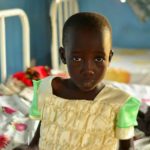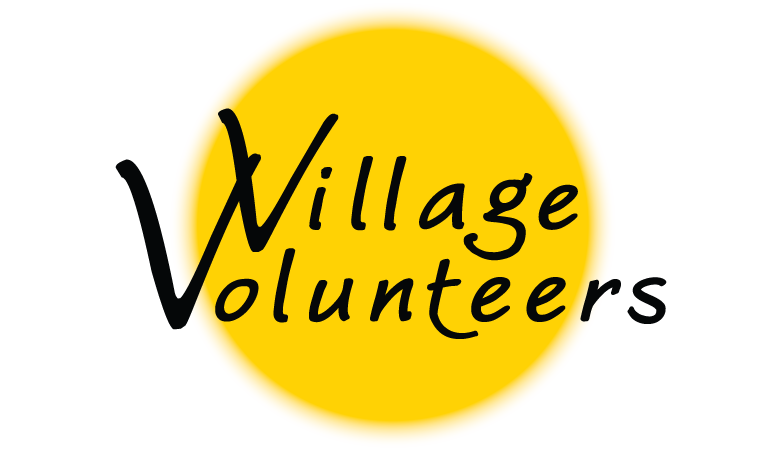Since the 2005 opening of his first Mama Maria Clinic, Peter Kinthene has seen remarkable success in his home at Muhuru Bay, a small village located near the border of Tanzania, but also in the work he has done. In 2007, Peter was the recipient of a CNN Hero Award for his groundbreaking work in saving lives as well as one of the University of Washington’s Wondrous 100 Alumni.
Bay, a small village located near the border of Tanzania, but also in the work he has done. In 2007, Peter was the recipient of a CNN Hero Award for his groundbreaking work in saving lives as well as one of the University of Washington’s Wondrous 100 Alumni.
Instead of looking towards bigger health organizations such as the United Nations or the World Health Organization, Peter instead focused on rural Kenya itself, “There has to be something we can do for ourselves.”Most of the motivation Peter has found was not without experience. As a young child, he watched his beloved family and friends fall from sickness – much that could have been prevented had they had access to medicine. This medicine, like most vital treatments, resided in the hospital. The nearest hospital to the village was a journey that most people who were sick already, would most likely not make. If a person was suffering from a deep wound, in most areas with access to medical care, the wound would have been appropriately handled. However, in a rural area like this, infections would make the chances of survival harder after factoring in a disease outbreak.
Rural villagers are affected the most by disease outbreaks and medical ailments compared to people who live in more urbanized areas such as the city of Kisumu, where private practices are available.
At an early age, Peter noted this. He knew something needed to be done.
Throughout his childhood, notably in Grade 7, Peter frequently visited people who were sick in the village, offering to make trips around the area to get medications. From there, his experience and work in the health field started. Despite the personal struggle, Peter graduated at the top of the class in grade school before winning a scholarship to attend the top premier high school in Kenya located in Nairobi. Peter embarked on his journey to America to attend the University of Washington (UW) in 2001 not too long after graduating high school- again at the top of his class.
This opportunity gave Peter the chance to connect and network with influential and well-known public health and philanthropists in Seattle such as Dr. Paul Farmer and Melinda Gates.
Soon after his graduation at UW, the Mama Maria Clinic and Hospital that we know today was opened and Peter’s childhood dream became a reality for fellow villagers in Muhuru Bay.
The Need for Mama Maria Clinic and Hospital
The reality of SCD in sub-Saharan Africa is that it has taken the lives of millions and despite discussion, not much else has been done. In rural areas without consistent medical care, people who are suffering from SCD face a grim reality. Most of the people who are born with the painful genetic disorder often die before they reach the age of 5. Without medical care and education on the disease, parents are helpless and forced to watch their children die because medical facilities are unable to test for the disease
Peter recalls the feeling of turmoil he knew his mother went through in watching 6 of her children- his siblings die of diseases that could have been prevented. To watch 6 of the children you have raised to be taken from a host medical ailments that were preventable further fueled Peter’s need to establish a clinic in Muhuru Bay.
In his experience, Peter has seen a substantial number of patients with SCD die at an early age even though their deaths are listed from Malaria- which was the result of a weakened immune system brought on from SCD. These inaccuracies and growing negligence in understanding and treating SCD was the cause of a lot of suffering and hardship.
HIV/AIDS is more well-known and talked about the disease than SCD and it makes diagnosing and discussion about the genetic disorder harder to do. Bigger hospitals in the region do not test for SCD, and without presentation of the disease, children with SCD have a very high mortality rate. He recalls in discussing with the parents, “After we would we tell them that their child had [SCD], they would open up.”
After learning their child’s pain was attributed to SCD, they would react joyfully that there was a name for their pain and struggle. Factor in the cultural speculation of superstition and the result is a devastated family but more importantly a confused and sick child who doesn’t understand what is happening to them.
Some of the care provided by Mama Maria
The clinic offers blood testing, HIV/AIDS testing, and care, home visits, essential aid such as bandaging, cleaning up cuts/abrasions, stitches, and more at lower prices than hospitals. Healthcare professionals in the form of medical technicians, volunteers, and interns.
A typical three-night stay at a bigger hospital would cost about 25,000 shillings (about $240 USD) in comparison to the 1500 shillings (about $14 USD) the stay would cost in Mama Maria.
What is notable about this non-profit clinic is that all visitors of the clinic are insured. No person is turned away and if they are unable to afford care, they pay with what they can. If they are unable to help a patient, they are referred to bigger hospitals with access to larger medical equipment and larger staff for situations like childbirth complications.
How Mama Maria operates
Mama Maria is funded mostly through government partnerships and small donations made by communities and third-party agencies. Most medical supplies are sold by vendors and pharmaceutical agencies. More complex medical devices are given by the government.
The clinic goes through three basic stages in their overarching goal to provide care is:
- Teaching People
- Offering Resources
- Presenting a Solution (the medical care itself)
By providing reliable and consistent medical care and a support network for patients, the clinic still in 2017, has created waves in the medical industry of Kenya.
The Domino Effect: Medical Care in Kenya
What started as small clinic offering care and support inspired others to help in any way that they can whether it’s in healthcare lobbying, volunteering in the clinic, or starting their own, Kenyans are taking this health epidemic in their own hands.
The Mama Maria Clinic was a step in the right direction, for the first time a native to Kenya has taken the issue into his own hands and sought for a change. However, Peter acknowledges that the health care issue was never his alone, but a shared issue.
And Peter is happy to share the problem by working with fellow professionals through mentorship programs, giving blueprints of his own clinic and even helping other set up their own clinics. All these efforts are crucial to providing structures of support for future plans of proving medical support- a key to stabilizing the turbulent Kenyan healthcare issue.
But what does this mean for outsiders wishing to make a difference and learn? Peter offers ways you can help. Extraordinary acts of compassion are done by normal people every day.
- Donate to Village Volunteers through the Sickle Cell Program to provide funds to continue the work of Mama Maria in the form of supplies and the costs for transportation. These are detrimental to ensuring the success of the clinic and quality of care provided to others.
- Donate for Health insurance costs $75 a year for a family of any size. In the future, Peter hopes to have every household in the rural area insured and receiving treatment.
- Partner with Village Volunteers to become a part of sustainable initiatives that will empower others like the villagers in Muhuru Bay or other parts of Africa.
- Connect with people who can donate or become partners. There is no limit to providing support or help.
The future of Mama Maria and Peter’s work
The future of Mama Maria is vivid and bountiful. Peter is looking to replicate and populate the Muhuru Bay clinic in another rural area in Kenya and eventually, throughout Africa. Peter is also to continue fundraising and continue the successful Village Volunteers program with the clinic. This will not only ensure the goal of quality and affordable healthcare but also create leadership roles in the rural area.
“After I had met with Dr. Farmer, he told me that I wouldn’t start seeing the results until twenty years later,” Peter recalls, “And he was completely right- I’m just now starting to see the results.”
For more information about the Sickle Cell Program with Mama Maria go here. Learn more about Sickle Cell Disease by visiting our Resource Library here.
For inquiries about volunteering or partnerships, email info@villagevolunteers.org.
